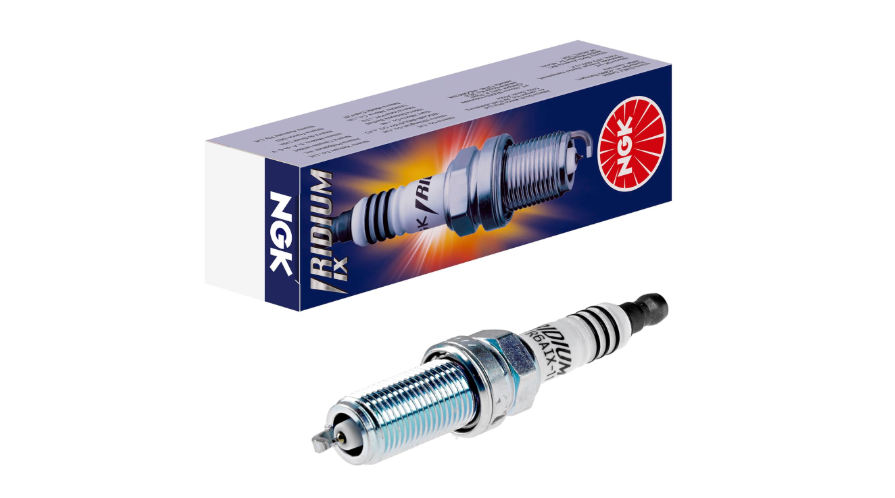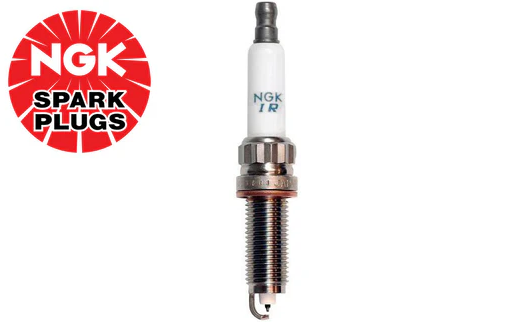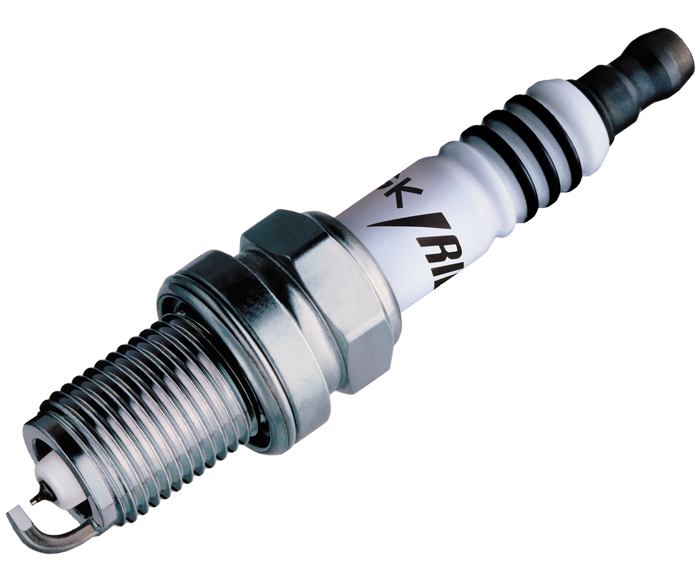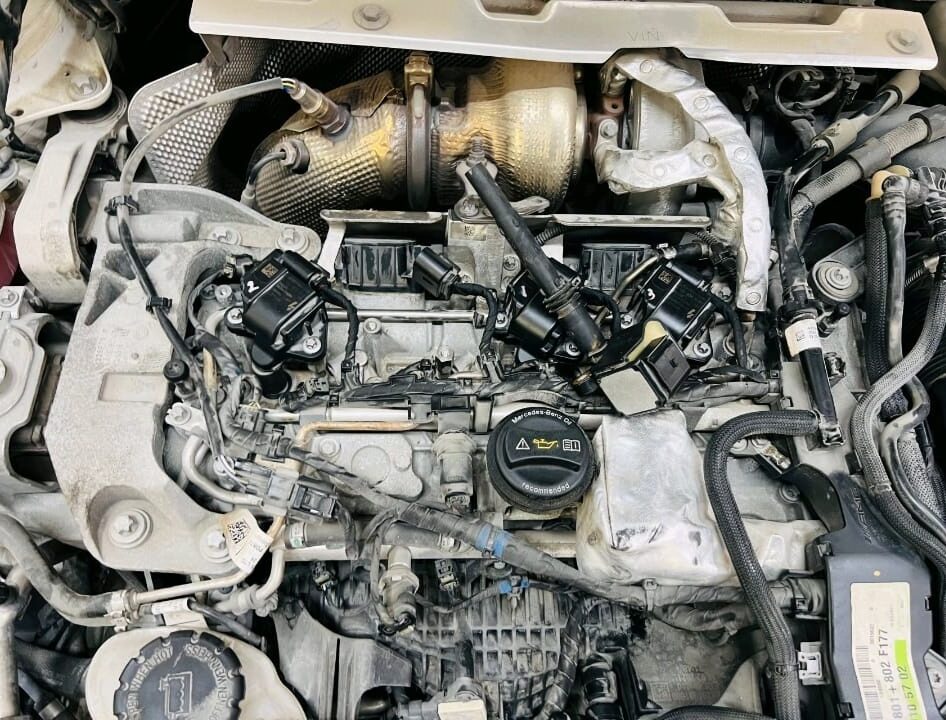“NGK 1 step colder vs 2 step colder” indicates the spark plug’s temperature range. A 1-step colder is for mild performance upgrades, while a 2-step colder suits higher performance or boost applications.
Choosing the right spark plug for your engine is important to ensuring optimal performance, especially in modified or high-performance setups. Spark plugs have different heat ranges, which indicate how well they can dissipate heat from the combustion chamber. NGK’s 1-step and 2-step colder spark plugs are designed to handle the increased demands of modified engines, particularly those running higher boost levels, more aggressive camshafts, or using high-octane fuels.
In this article, we’ll dive deep into NGK’s 1-step and 2-step colder spark plugs, looking at their design, benefits, applications, and how to determine which one is the right fit for your vehicle. We will also answer some common questions to help you make an informed decision when upgrading your spark plugs.
Contents
What Does “Colder” Mean in Spark Plugs?
The heat range of a spark plug refers to its ability to transfer heat away from the tip. A spark plug that is considered “colder” dissipates heat more effectively than a “hotter” spark plug, which retains more heat at the tip.
Why is Heat Dissipation Important?
In high-performance engines, especially those with forced induction (turbocharged or supercharged), the combustion temperatures can rise significantly, which increases the risk of pre-ignition, engine knock, and fouling of spark plugs. A colder spark plug can handle the increased heat by dispersing it more effectively, preventing the plug from overheating and causing engine damage.
- 1-step colder spark plugs: These are typically used in mildly modified engines where the heat generation is higher than stock but not extreme.
- 2-step colder spark plugs: These are intended for heavily modified engines that run at much higher temperatures, such as those with significant boost levels, high compression ratios, or those running specialized fuels.
NGK 1-Step Colder Spark Plugs
NGK 1-step colder spark plugs are designed for vehicles with moderate performance modifications. If you’ve increased your engine’s power output by adding a turbocharger, supercharger, or any other performance modifications, 1-step colder plugs are often the ideal choice. They are designed to provide a balance between heat dissipation and the longevity of the plug.
How NGK 1-Step Colder Spark Plugs Work
NGK’s 1-step colder plugs have a longer insulator nose compared to standard plugs. This allows the plug to dissipate more heat from the combustion chamber, making it more suitable for engines that are producing more heat than stock engines. The heat is transferred more efficiently, helping to reduce the chances of misfires and pre-ignition.
Applications of NGK 1-Step Colder Spark Plugs
NGK 1-step colder spark plugs are ideal for engines with moderate performance modifications. These plugs are designed to handle higher temperatures than standard spark plugs, making them suitable for vehicles running increased boost, higher compression, or using higher-octane fuels.
- Turbocharged Engines: If you’ve added a turbocharger to your engine, the increased boost levels generate more heat. A 1-step colder spark plug can handle these temperatures more effectively.
- Supercharged Engines: Supercharged engines also produce higher heat levels, and a 1-step colder plug can prevent overheating in these setups.
- Higher-Octane Fuels: If you are running E85 or other high-octane fuels, the combustion temperatures will increase, making a 1-step colder plug a good fit.
- Mildly Tuned Engines: Any engine with moderate tuning, like a stage 1 tune or mild modifications, can benefit from these plugs.
Benefits of NGK 1-Step Colder Spark Plugs
NGK 1-step colder spark plugs offer several advantages for performance-oriented engines. By providing better heat dissipation, these plugs help ensure optimal engine performance, reducing the risk of misfires and engine knock under higher loads.
- Improved Heat Dissipation: These plugs can handle higher temperatures, making them ideal for moderately tuned engines.
- Reduced Risk of Pre-Ignition: Colder plugs help prevent pre-ignition, which can cause engine knock and damage.
- Better Throttle Response: In performance applications, 1-step colder plugs provide smoother power delivery and better throttle response.
- Longer Lifespan: Under moderate performance conditions, these spark plugs will last longer than stock plugs due to better heat management.

NGK 2-Step Colder Spark Plugs
NGK 2-step colder spark plugs are designed for heavily modified engines. If your car is running high boost levels, has a high-compression engine, or uses race fuels like methanol or high-octane gasoline, a 2-step colder plug is the appropriate choice. These plugs offer even more effective heat dissipation than 1-step colder plugs, making them suitable for extreme engine setups.
How NGK 2-Step Colder Spark Plugs Work
NGK’s 2-step colder spark plugs have an even longer insulator nose than the 1-step colder plugs. This extra length allows the plugs to dissipate even more heat, which is crucial for engines that operate at much higher temperatures. The design is built to withstand the extreme conditions found in high-performance, race-oriented applications.
Applications of NGK 2-Step Colder Spark Plugs
NGK 2-step colder spark plugs are designed for high-performance and heavily modified engines that generate significant heat. These plugs are specifically built to handle extreme conditions, ensuring that your engine runs smoothly under the most demanding setups.
- High-Boost Turbocharged Engines: Engines running significant boost levels (e.g., 20+ psi) can generate a tremendous amount of heat. 2-step colder plugs can handle these extreme temperatures without compromising performance.
- Engines with Advanced Fueling: Cars using advanced fuel systems, such as methanol injection or running high-octane race fuels, require plugs that can handle higher combustion temperatures.
- Heavily Tuned Engines: Engines with aggressive camshafts, high compression ratios, or extensive aftermarket modifications will benefit from the heat dissipation provided by 2-step colder plugs.
Benefits of NGK 2-Step Colder Spark Plugs
NGK 2-step colder spark plugs are designed for high-performance engines that demand the highest level of heat dissipation. These plugs provide enhanced protection against pre-ignition and detonation, making them ideal for race cars and engines running extreme boost levels or advanced fuels.
- Maximum Heat Dissipation: These plugs are built for extreme conditions, making them perfect for heavily modified engines.
- Pre-Ignition Prevention: They drastically reduce the risk of pre-ignition and detonation in high-performance setups.
- Stable Spark: Under high boost or race conditions, these plugs maintain a stable spark, ensuring reliable engine operation.
- Increased Performance: With the ability to manage excessive heat, 2-step colder plugs can help maintain optimal engine performance even in the most demanding situations.

NGK 1-Step Colder vs 2-Step Colder: Which One Should You Choose?
When choosing between NGK 1-step and 2-step colder spark plugs, it’s important to consider your engine’s modifications and the level of performance you’re aiming for. Each spark plug type offers different levels of heat dissipation, so selecting the right one ensures your engine runs smoothly under your specific driving conditions.
| Feature | NGK 1-Step Colder | NGK 2-Step Colder |
|---|---|---|
| Heat Dissipation | Moderate | High |
| Applications | Turbocharged, supercharged engines, E85, mild tunes | High-boost, race engines, aggressive fuels |
| Risk of Pre-Ignition | Lower | Very Low |
| Spark Plug Life | Extended under performance | Extended under extreme use |
| Ideal Fuel Types | E85, higher-octane fuels | Race fuels, methanol, E85 |
| Typical Use | Street, daily driving, mild performance | Track, drag racing, high-performance |
How to Choose the Right Spark Plug Heat Range for the Engine
Choosing the right spark plug heat range is essential to maintaining engine health and performance. Here are some factors to consider when deciding between NGK 1-step and 2-step colder plugs:
- Engine Modifications: More significant modifications (e.g., turbocharging, supercharging) often require colder plugs.
- Boost Levels: High boost levels generate more heat and will need a colder plug.
- Fuel Type: Engines using high-octane fuel or E85 benefit from colder plugs due to the higher combustion temperatures.
- Driving Conditions: Street cars with moderate tuning can use 1-step colder plugs, while race cars or high-performance setups should consider 2-step colder plugs.
It’s always a good idea to consult with a professional mechanic or tuner who can assess your specific setup and recommend the best spark plug heat range for you.
Frequently Asked Questions
Here are some FAQs about ngk 1 step colder vs 2 step colder –
1. What does “colder” mean for spark plugs?
“Colder” refers to a spark plug’s ability to dissipate heat more effectively, making it suitable for engines with higher temperatures due to modifications like turbocharging or supercharging.
2. Can I use 2-step colder plugs in a stock engine?
Using 2-step colder plugs in a stock engine can cause fouling and other issues since stock engines do not generate enough heat to require such extreme heat dissipation.
3. How often should I replace colder spark plugs?
Colder spark plugs should be inspected and replaced every 10,000 to 20,000 miles, especially under high-performance conditions, to prevent fouling and ensure reliable operation.
4. What is the difference in spark plug life between 1-step and 2-step colder plugs?
2-step colder plugs are designed for more extreme conditions, so they tend to wear out faster than 1-step colder plugs, which are meant for less aggressive tuning.
5. How do I know which spark plug heat range is right for my engine?
The correct heat range depends on your engine’s modifications, fuel type, and boost levels. A tuner or mechanic can assess your setup and recommend the best spark plug heat range.
Conclusion
Choosing between NGK 1-step and 2-step colder spark plugs depends on the vehicle’s performance setup. While the 1-step colder plugs are suitable for moderately tuned engines, the 2-step colder plugs are necessary for heavily modified engines running at extreme temperatures. Using the correct spark plug heat range ensures optimal performance, reliability, and longevity of your engine, helping you avoid issues like pre-ignition and misfires.





